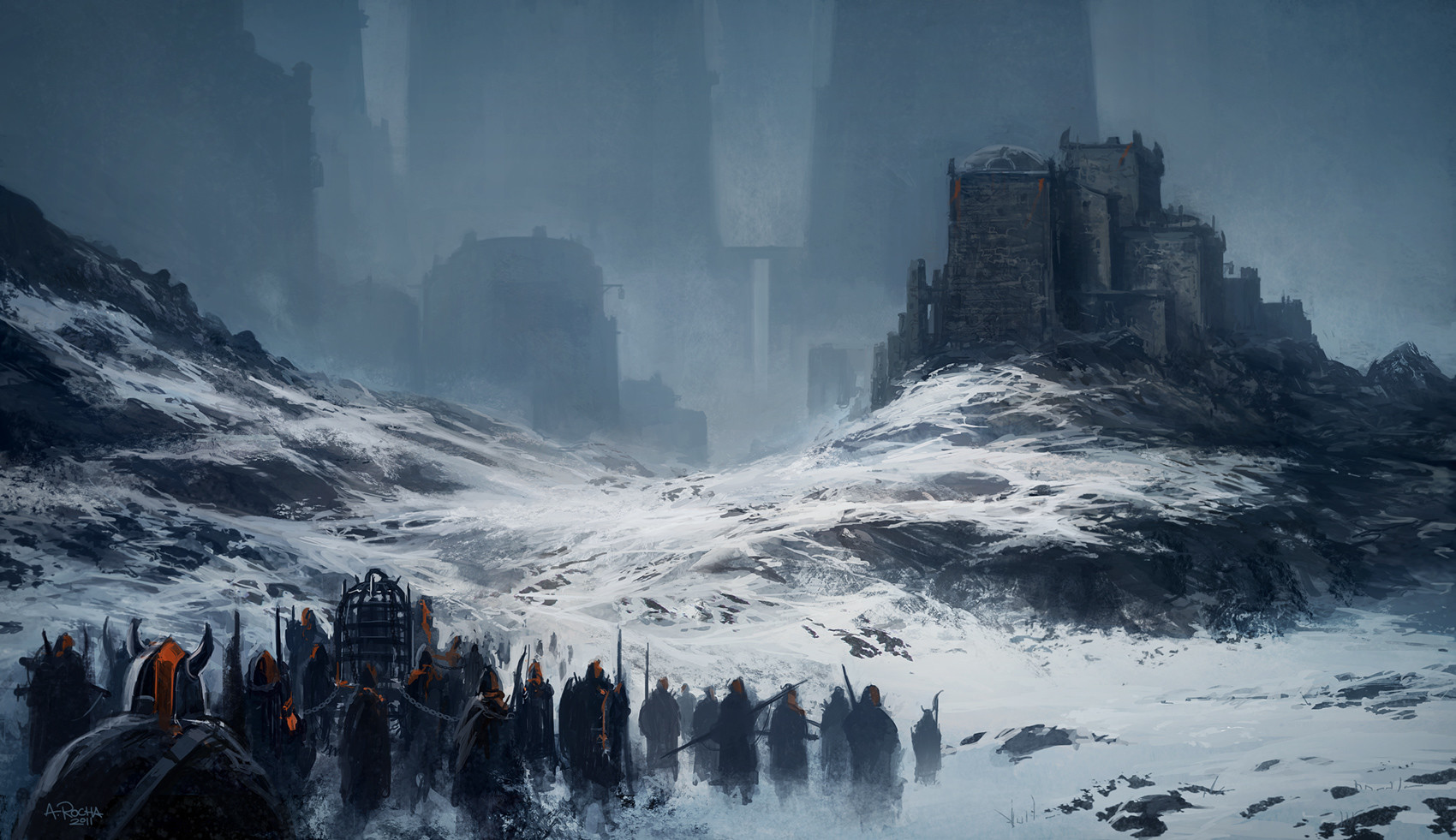Weather during the 14 frozen
Wrapped in several layers of wool, the pages of this book are stitched together with sinew thread. The pages are uneven, each of a slightly different size. The wear and tear has crumbled many parts of the pages with large sticking out surfaces, as evidenced by missing words in sentences.
On an initial look, the book appears to be an examination of cold weather patterns in Vuotnaivi in between the years 5.548 and 5.562. The writer describes the weather of each year; both the beginning and end years have extraordinarily cold waves according to the author. This period is referred throughout the book as the "14 frozen" years.
On a more careful examination, two patterns emerge. First, the author's initial intent was to better understand cold waves; second, the author developed an interest as the tome was being written about the effects of such unexpected and lengthy cold waves on dwarves mental stability.
Several theories are proposed and investigated for the development of cold waves, but the author reaches no conclusions about any. There is an intent to continue detailing weather patterns and investigating them, yet the book finishes after the cold wave of 5.562 finishes.
As for the mental effects, the book describes the crazy frenzies that would get over people when even the heating runes would freeze over, a thick layer of ice over them. With the top of the island frozen, refugees poured into the caverns, with little knowledge of how to survive there or be of help. Many of those refugees were termed to have their "head frozen", as they would stay in place, for hours at a time, lost in the icy prison of their minds. The book also details how the Gakbog were close to insurrection on the cold wave of 5.548 and actually rebelled against the other clan's rules and abuse during 5.562.
The book ends with a sad children's tale that became commonplace in Vuotnaivi during those years. It starts and finishes with sentences that are still very common nowadays.
Gather your sticks, logs, and gakka pellets, for a story is about to commence.
The fuel is finished and so is the story. Let us be warm while the story lives in our minds.



Comments
Author's Notes
The end of the article is heavily inspired by this video from an awesome worldbuilding channel. If you have never watched her stuff, I wholeheartedly recommend her.